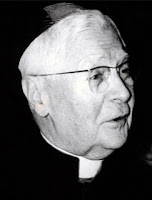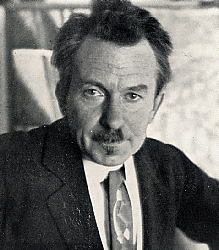Giacomo Balla - painter
Work captured light, movement and speed
The painter Giacomo Balla, who was a key proponent of Futurism and was much admired for his depictions of light, movement and speed in his most famous works, was born on this day in Turin. An art teacher who influenced a number of Italy’s most important 20th century painters, Balla became interested in the Futurist movement after becoming a follower of the poet Filippo Tommaso Marinetti, who is regarded as the ideological founder of Futurism. Futurism was an avant-garde artistic, social and political movement. Its ethos was to embrace modernity and free Italy from what was perceived as a stifling obsession with the past. Balla was one of the signatories of Il manifesto dei pittori futuristi - the Manifesto of Futurist Painters - in 1910. He differed from some of the other artists who signed the Manifesto, painters such as Carlo Carrà and Umberto Boccioni, whose work tried to capture the power and energy of modern industrial machinery and the passion and violence of social change, in that his focus was primarily on exploring the dynamics of light and movement. Read more…
_________________________________________________________________
Gino Bartali - cycling star and secret war hero
Tour de France champion was clandestine courier
Gino Bartali, one of three Italian cyclists to have won the Tour de France twice and a three-times winner of the Giro d’Italia, was born on this day in 1914 in the town of Ponte a Ema, just outside Florence. Bartali’s career straddled the Second World War, his two Tour successes coming in 1938 and 1948, but it is as much for what he did during the years of conflict that he is remembered today. With the knowledge of only a few people, Bartali repeatedly risked his life smuggling false documents around Italy to help Italian Jews escape being deported to Nazi concentration camps. He hid the rolled up documents inside the hollow handlebars and frame of his bicycle and explained his frequent long-distance excursions as part of the training schedule he needed to maintain in order to keep himself in peak physical fitness. In fact, he was carrying documents from secret printing presses to people who needed them in cities as far apart as Florence, Lucca, Genoa, Assisi, and the Vatican in Rome. Sometimes he would pull a cart that contained a secret compartment in order to smuggle Jewish refugees in person into Switzerland, explaining that hauling a heavy cart was also essential to his training routine. Read more…
________________________________________________________________
Mysterious death of Caravaggio
Experts divided over how brilliant artist met his end
The death of the brilliant Renaissance artist Caravaggio is said to have occurred on this day in 1610 but the circumstances and even the location are disputed even today. Official records at the time concluded that the artist died in the Tuscan coastal town of Porto Ercole, having contracted a fever, thought to have been malaria. However, there is no record of a funeral having taken place, nor of a burial, and several alternative theories have been put forward as to what happened to him. One, which came to light in 2010 on the 400th anniversary of the painter's death, is that Caravaggio's death was caused by lead poisoning, the supposition being that lead contained in the paint he used entered his body either through being accidentally ingested or by coming into contact with an open wound. This was supported by research led by Silvano Vincenti, a prominent art historian and broadcaster, who claimed to have found evidence that Caravaggio had been buried at a cemetery in Porto Ercole that was built over in the 1950s. Another theory, put forward in 2012 by Vincenzo Pacelli, a professor at the University of Naples, is that the artist, notorious for a quick temper and violent behaviour, was assassinated by the ancient order of the Knights of Malta with the connivance of the Vatican. Read more…
_________________________________________________________________
Alberto di Jorio – Cardinal
Priest spent 60 years accumulating money for the Vatican
Cardinal Alberto di Jorio, who increased the wealth of the Vatican by buying shares in big corporations, was born on this day in 1884 in Rome. Di Jorio was considered to be the power behind the Istituto per le Opere di Religione, popularly known as the Vatican Bank, which he served for 60 years. As a young man he had been sent to the prestigious Pontifical Roman Seminary and he became a Catholic priest in 1908. Di Jorio worked in an administrative role for the Vatican to begin with, but in 1918, when he was still in his early 30s, he took up the position of president of the Istituto per le Opere di Religione - The Institute of Religious Works. After the Lateran Treaty settled the Roman Question and made the Vatican an independent state, di Jorio was chosen to run the Vatican Bank and allowed to buy shares in any company, even if it made products that were contrary to Catholic Church teaching. By buying into strong businesses such as General Motors, Standard Oil, IBM and Italgas, the major supplier of gas to Italy at the time, he substantially increased the wealth of the Vatican. Read more…
Home

























